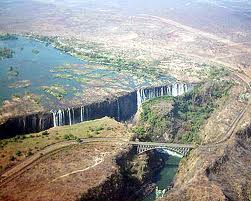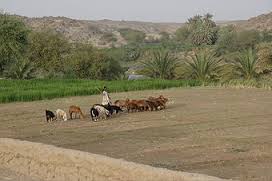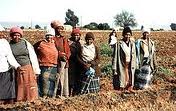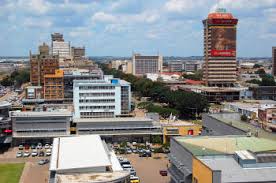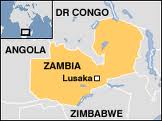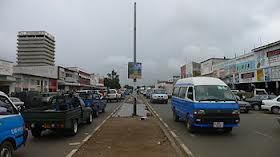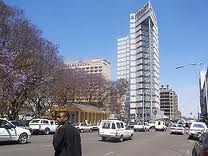A Tribute to Saartjie Baartman
I’ve come to take you home –
home, remember the veld?
the lush green grass beneath the big oaks trees
the air is cool there and the sun does not burn.
I have made your bed at the foot of the hill,
your blankets are covered in buchu and mint,
the proteas stand in yellow and white
and the water in the stream chuckle sing-songs
as it hobbles alone over little stones.
I have come to wretch you away –
away from the poking eyes
of the man-made monster
who lives in the dark
with his clutches of imperialism
who dissects your body bit by bit
who likens your soul to that of Satan
and declares himself the ultimate god!
I have come to soothe your heavy heart
I offer my bosom to your weary soul
I will cover your face with the palms of my hands
I will run my lips over lines in your neck
I will feast my eyes on the beauty of you
and I will sing for you
for I have come to bring you peace.
I have come to take you home
where the ancient mountains shout your name.
I have made your bed at the foot of the hill,
your blankets are covered in buchu and mint,
the proteas stand in yellow and white –
I have come to take you home
where I will sing for you
for you have brought me peace
Diana Ferrus

Diana Ferrus – blacklooks.org
Saartjie Baartman
This poem, written by the South African Diana Ferrus, refers to the return of Saartjie Baartman to her home country. On Women’s Day, 9 August 2002, the remains of Saartjie Baartman were finally laid to rest in the area of her birth, the Gamtoos River Valley in the Eastern Cape. Thus ended a long period of exile in life and in death of a young Khoikhoi woman, who was to become an icon in South Africa as a victim of the horrors of colonialism and racism.
Born in 1789 and orphaned in a commando raid, Saartjie Baartman became the servant of the Dutch farmer Johan Cezar near Cape Town. When his brother Henrik Cezar and his friend, the ship’s doctor William Dunlop, visited Johan in 1810, they met with Baartman and convinced her that it would be to her advantage to accompany them to Europe. Each for his own reasons wanted to make the most out of her physical characteristics. From the 17th century onward, Europeans had been fascinated by the steatopygia, the broad hips and large buttocks, of Khoikhoi women. Furthermore, Khoikhoi women knew the custom of elongating the labia to conform to an ideal of beauty. The resulting sinus pudoris, or ‘curtain of shame’ equally was a source of fascination frequently mentioned in both popular and scientific literature.
In London Saartjie Baartman was exhibited as a ‘freak’ and ‘scientific curiosity’. She was advertised in the paper as the ‘Hottentot Venus’. For extra payment, the interested public was allowed to touch her buttocks. Later she was sold to an animal trainer and brought to Paris where she was forced to act in a circus. She was visited by the French anatomist Georges Cuvier and various French naturalists and was the subject of several scientific paintings. Saartjie Baartman died in 1815 of an inflammatory ailment, but this was not the end of her dreadful fate. An autopsy was conducted and a detailed description of her physical characteristics was published by Georges Cuvier. He made a plaster cast of her body. Her skeleton, brain and preserved genitals were put on display in the Musée de l’Homme until 1974. Then they were removed from public view but continued to be part of the museum collection.
It is difficult to find words to express the depth of dehumanization and degradation Baartman (and in extension all the Khoikhoi people of South Africa) was subjected to. The story is too poignant to treat with mere discursive reasoning. Maybe this is the reason why so many South African sculptors, painters and authors have incorporated it in their work, like Diana Ferrus in her poem. In 1994 president Nelson Mandela requested for the return of the remains of Saartjie Baartman to her home country. But it took the French government eight years to finally pass a bill to allow for this. In fact, it was the poem written by Diana Ferrus that made such an impression on a French senator that he proposed the change of law that made the return of the remains of Saartjie possible.
We retell this story to touch upon one single dimension of it, the role of science. As explained by Buikema (2004), William Dunlop’s interest in Baartman was probably scientific in nature. In the early 18th century stories of voyagers about Africa entered scientific discourse. The indigenous population of Africa was described as subhuman and characterized as having a bestial sexuality. However, in science such categorisations had to be proven by detailed empirical descriptions. As Buikema points out, Dunlop probably thought to serve scientific interests by offering Baartman as study object to the world of medicine and natural history. The same frame of mind explains the actions of Cuvier.
This dimension of the story of Saartjie Baartman raises questions about science, not only about the moral dimensions of scientific practice and discourse, but equally about scientific method and its position vis-à-vis other forms of knowledge. It also draws attention to the wider social and political context in which science developed. We take these questions as a starting point for our discussion on the role of knowledge in development.

Photo: bbc.co.uk
Knowledge and development
Development cooperation is often considered to have started with president Truman’s famous 1949 Inaugural Address. In his speech Truman introduced the concept of ‘underdevelopment’ and announced ‘a bold new programme for making the benefits of our scientific advances and industrial progress available for the improvement and growth of underdeveloped areas’. Ever since, the transfer of knowledge and capital have been central components of development cooperation and permanent factors beneath the ever-changing fashions in development approaches and jargon. In the words of Vandemoortele (2004: 2):
The partnership between rich and poor countries takes many forms, including foreign aid or official development assistance. In essence there are two major dimensions to that partnership: one is concerned with ‘money changing hands’; the other with ‘ideas changing minds’.
Why do knowledge and capital play such a central role in development cooperation? The answer is surprisingly simple. It is because knowledge and capital accumulation are considered to be the formula through which the developed nations have become what they are.
As will be elaborated upon later in this paper, since the development of capitalism in the 17th and 18th century, the twin mechanisms of knowledge and capital accumulation have come to be seen as the motor behind progress and the spreading of modernity. It is, therefore, not surprising that the transfer of knowledge and capital is seen as the solution for underdevelopment. Knowledge, in this context, is seen as an objective understanding of nature and society. It is seen as factual and neutral, a mere reflection of reality. The accumulation of such knowledge is to be seen as integral to the development process itself, and the transfer of such knowledge as integral to international development assistance.
Due to various historical and political processes, scientific knowledge became the kind of knowledge that dominates a wide array of fields of thought, including development thinking. As Smart (2002: 61) points out:
A predominant and taken-for-granted characteristic of modern civilization is the differentiation and associated ranking of forms of knowledge in accordance with elaborate criteria of scientificity. The corollary of this process of differentiation and ranking is the disqualification and subjugation of those forms of knowledge deemed to be illegitimate in terms of the particular criteria of scientificity employed.
This resulted in the inferior status attributed to other forms of knowledge and, likewise, in an unequal relationship between individuals possessing scientific knowledge and individuals having other types of knowledge. Transfer of knowledge through technical assistance provided by western experts is a case in point. As Crew and Harrison (1998: 92) have argued:
The division between indigenous and Western or scientific knowledge is based on ideas about people rather than on objective differences in knowledge or expertise. … An ‘expert’ is not an equal. He or she is by definition better than non-experts in at least one respect, that is in having greater expertise. The prior definition of certain forms of knowledge as ‘expertise’ according to who has the knowledge, rather than because of the nature of what is known, effectively excludes a wide range of people from the central discourse.
Obviously, the transfer of knowledge is not neutral and may even have undesirable consequences. It is never a matter of transferring knowledge per se. Situations in which knowledge is exchanged always involve complex social interactions between individuals in possession of different assets and political and social capabilities. As we will elaborate in this paper, ‘spaces’ for negotiation between knowledges are never neutral.
Especially regarding development assistance, the transfer of knowledge occurs in contexts marked by diversity and complexity. Western conceptual frameworks and the western model of development are transferred to – if not imposed on – local contexts. Indeed, within the field of development cooperation a lot of ‘development knowledge’ is mobilised that is completely blind to local particularities. It has the tendency to ignore or even sweep away existing local knowledges and perspectives (Utting 2006). Conceivably, valuable resources for development are disregarded in the process.
It is to a discussion of the role of knowledge in development, and of the nature and value of scientific knowledge in relation to other knowledges, that we now turn. This paper approaches the issue of knowledge for development both from a scholarly and a policy point of view. This means that we will analyse the role of knowledge in development and will reflect on the implications thereof for policy making. Thus we hope to contribute to a better understanding of the roles scientific and other knowledges do and can play in development.
In this paper we will look into the nature of scientific knowledge and will critically assess its claims to objectivity and universal validity. In doing so, we will touch upon the way knowledge is generated, from the perspective of both the sociology and the philosophy of knowledge. We will subsequently turn to ‘alternative forms of knowledge’ in relation to development issues. Next, we will look into theoretical accounts for the interaction of different knowledges. To illustrate how this works out in practice, we will describe and assess the South African policy on indigenous knowledge systems.[Based on a brief case study carried out in June 2007 through interviews with officials working for the Department for Science and Technology, division for Indigenous Knowledge Systems, and the Department of Education, and interviews with scholars and officials of the National Research Foundation and various research institutes in Pretoria, Johannesburg and Durban.] To conclude, we will address the question whether it is possible to bring in alternative forms of knowledge for development.
Scientific knowledge
Scientific knowledge has become the dominant type of knowledge worldwide, claiming to be objective and universally valid. In this section we will investigate how scientific knowledge is produced and how the acclaimed objectivity and universality have come about. We will concentrate on the main characteristics of scientific knowledge and indicate how these became the criteria for the ‘right type’ of knowledge. This means we need to look at science from a historical perspective, placing it in the wider context of the development of western society.
Scientific knowledge and its characteristics
‘Scientific knowledge’ does not merely refer to the content of knowledge, but first and foremost to the way it is generated; its method. Scientific knowledge is generated following the strict rules and methods of science. Purcell summarises that such knowledge ‘… carries the attributes of inconvertibility, … objectivity, rationality, testability, and finally, the bedrock of positivist legitimacy, replicability or verifiability’ (1998: 259). These last characteristics refer to the methods of producing knowledge. Knowledge production needs to be transparent.
Furthermore, scientific knowledge needs to explain the relationship between cause and effect. By formulating hypotheses, integral part of the scientific procedure, explanations become testable. Results become objective when other scientists are able to test these results as hypotheses. This is how people came to think that knowledge produced following scientific procedures was verifiable independent of one’s culture or belief system. It resulted in the idea of universality of knowledge. This method of generating knowledge can be applied anywhere and anytime; it crosses the boundaries of space and time.
Of course, the sociology and history of science have taught us that this is a very idealised picture of science. In practice, there is no such thing as a unified science or a universal scientific method. Rather there is a wide variety of scientific practices, experimental systems, methodologies and epistemologies, a much greater variety than presupposed by this image of a context-free unified science (Nowotny et al. 2001: 56, 57). Moreover, there is a variety of modalities of knowledge production. Knowledge is always produced in specific socio-cultural spaces which enable as well as constrain (Rip 2002: 110) and through which values unconsciously enter scientific discourse.
Thomas Kuhn (1962) is one of the best known critics of the scientific method. He demonstrated that scientists do not always work objectively and independently. Kuhn stressed that science is relational. During the process, scientists react on changes in their environment and are influenced by work carried out by other scientists. He therefore rejected the universal validity of scientifically produced knowledge.
The notion that scientific knowledge contains more ‘truth’ than local knowledge is vehemently challenged by sociologists and philosophers. They question the idea of an epistemology based on a logic of cause and effect that is not limited to a specific context. In addition, they reject the idea that all knowledge needs to be validated externally or needs to be empirically testable. In their view, knowledge can be true knowledge even if it is relative. Empirical knowledge and theory are complementary (Purcell and Onjoro 2002: 173).
The sociology of knowledge teaches us that knowledge is a social construct. It is created and validated in a social context. Also, it reflects the values of those involved with the production of knowledge. This equally holds for scientific knowledge. Science is a social process of producing meaning and claiming authority.
Still, the idealised picture of objective science continues to strongly appeal to both the public at large and to large groups of scientists. The production of reliable knowledge continues to reflect a central epistemic value and quite a number of scientists, consciously or not, adhere to the ideal of producing universally valid knowledge. How, then, did these standards for scientific knowledge come about?
From meaning to observable facts
For this question to be answered, we need to go back to the origin of this ‘modern knowledge’; the Renaissance and early Enlightenment. René Descartes is often considered to be one of the founding fathers of the scientific method. Central to his and later Enlightenment thinking became the distinction between body, mind and world by a form of rationality (Apffel-Marglin 1996: 3). Prior to the scientific revolution, people used to find truth and beauty in the world, which was perceived as both spiritual and material. The Enlightenment saw the birth of the idea that meaning and truth were not to be found in matter. By separating mind from body and world, the latter two became meaningless. Matter, both as world and body, no longer represented the beautiful. One had to turn to reason to achieve full self-realisation.
A distinction occurred between knowledge produced by logical deduction and knowledge gained through practical experience. The term episteme is used for the Cartesian method of acquiring knowledge; epistemic knowledge is knowledge based on logical deduction. Episteme is analytical, decomposing reality into components step by step (Marglin 1996: 229). Episteme is usually translated as theory. Marglin contrasts episteme with techne, which is knowledge generated through practice and by experience, an empirical kind of knowledge (1996: 230). As it involves the practice and experience of individuals, it cannot be impersonal. Nor can it be universal, because it is attached to experience in a certain place and period of time. However, in contrast to what Marglin implies, early science saw the development of methods and technologies to turn such empirical knowledge into objectified information and to make the personal first-hand observation of phenomena into a stepping stone for generating universalised knowledge.
Scientific procedure developed by moving away from speculations about the essence and first causes of things and turning to precise and detailed observations and descriptions of phenomena. Francis Bacon, another founding father of the scientific method, whose name is associated with the early history (or rather prehistory) of the notion of objectivity (Lorraine 1994), advocated that measurements and experiments should be the basis for generalised insights.

Boerhaave – wikipedia
In the early 18th century, Herman Boerhaave, the most famous medical professor of his time, became one of the chief advocates for respecting descriptive facts rather than speculating on ultimate causes (Cook 2007: 383). Boerhaave revolutionised the treatment of diseases. As Cook describes,
He believed that particular symptoms pointed to particular physiological causes. The disease and its cause would consequently be the same in anyone found to be suffering from the same symptoms. Treatment … would be similar in all suffering the same effects (ibid.: 393).
Implicit in such thinking is Descartes’ separation of body and mind. Differences between individual minds have no bearing on the illness or its treatment.
Renaissance thinking saw the birth of natural history as an independent discipline from medicine and pharmacy. It took the form of developing a common language and method for describing and depicting naturalia. This allowed for the transfer of local knowledge. Cook describes how during the 17th and early 18th century naturalia from around the globe were observed, described, collected and exchanged, leading to an impressive accumulation of knowledge and of collections of dead and live specimens. Indigenous knowledge was studied with the purpose of extracting information to be transported and used in other contexts. Knowledge, developed by other peoples in other cultures, was appropriated. Thus, descriptive information was objectified and universalised, making it easy to exchange (ibid.: 225).
Jacobus Bontius, a physician working for the Dutch East India Company in Asia, extensively studied indigenous knowledge and converted local concepts into parcels of information that could be packaged in Dutch syntax. He discarded the contexts in which indigenous knowledge had meaning and focused on aspects of this knowledge that could be easily de-contextualised and transferred. As Cook (ibid.: 208) aptly puts it:
Bontius was boiling things down to their lowest common denominator, information units that could be circulated in just about any context. He (re)produced knowledge, accumulated it, and exchanged it, making information – if not theories – commensurable.
The process involved growing attention for certain aspects of nature and a disregard for others. Naturalists focused on the surface characteristics of naturalia, on morphology. Cook (ibid.: 345) cites Japanese sources commenting upon western science as ‘ingenious only in techniques that deal with appearances and utility, but ignorant about metaphysical matters’ and considering ‘the emphasis on appearances for their own sakes trivial and vulgar’. The growing emphasis on factual observations strengthened the idea of the separation of mind and worldly objects, therewith increasing the distance between the self and the other; it thus enhanced the sense of objectivity.
The community of credible witnesses
Another emerging characteristic was that only ‘trusted witnesses’ were allowed to conduct experiments and report on the outcome. Generating scientific knowledge about natural history went hand in hand with the growth of a community of practitioners. This community, tied together through travel, extensive correspondence and the exchange of information, developed a disciplinary self-awareness (Ogilvie 2006: 53). It is within this community, and through sharing common methods, standards and technologies, that naturalists generated objective knowledge. The members defined themselves by participating in this community, thus excluding many local knowledge bearers that were not part of this tradition. Paradoxically, it was through such exclusion of other knowledge bearers that objectivity was constructed and knowledge was universalised.
With hindsight, it is easy to observe the social nature of scientific knowledge production already in the early manifestations of modern science. According to Campbell (1979), ‘tribal norms’ are involved in enforcing epistemological principles and in excluding those who are not part of the scientific community. Science is not possible without rules for describing and communicating observations. Intriguingly, the meaning of ‘fact’ as ‘a datum’ only emerged in the course of the 17th century and was derived from law. In legal terminology the word meant a ‘deed’, a true account of what had happened (Daston 1994: 45; Cook 2007: 16, 17).
Behind the alleged incontestability of facts, then, lies the authentic testimony of creditable witnesses. Shapin and Schaffer (1985: 23) have shown that at the heart of the early modern scientific method for establishing facts lies a social process. The birth of the experimental method in the natural sciences took the form of the emergence of literary and social conventions for the correct way of describing and discussing experiments and validating knowledge, again enhancing the notion of objectivity.
Concluding, the notion of what constitutes ‘true knowledge’ became conditioned by two emerging tendencies. First of all, it became increasingly important to be recognised as belonging to a community of practice in order to be accepted as ‘credible witness’. Secondly, knowledge became captured in a particular language; describing naturalia and thus reducing social phenomena and contextual meanings to facts. Both tendencies excluded wide fields of knowledge and large groups of knowledge holders. Their knowledges was acknowledged an inferior status. The relation between the scientific community and other knowledge holders thus reflected the large scale subjugation and economic exploitation characteristic of the socio-political relations of that age. This raises questions about the perceived neutrality of knowledge.
The social roots of the scientific worldview
The separation of mind, body and world allowed for a detached study of the nature of reality, the autonomous human mind studying body and world. Indirectly it also gave rise to the idea that science itself is an autonomous field, the product of the freely speculating mind. There are good reasons, though, to think that the emergence of this worldview was not at all an autonomous process and was embedded in and influenced by a much wider process of social and economic change. There is an analogy between scientific and economic conceptual schemes that indicates a close relation, much closer than usually realized in the philosophy and history of science.
Seen within a wider social and historical context, the conceptual separation of mind, body and world reflects the dissociation of individual, commodity and value surfacing in the emerging economic order. The 16th and 17th century saw the rapid development and expansion of a new economic order; the breaking up of feudalism and the growth of merchant capitalism. One of the most dominant characteristics of this process was the evolving monetization of the economy and the birth of ever new monetary instruments. This profoundly influenced the way relations between goods and relations between men were perceived. Money projected a single quantitative standard of value on a wide variety of qualitatively different things. The notion of value was abstracted from concrete things and embedded in a single medium. This made even the most diverse qualities commensurable in terms of a single common denominator (Aglietta and Orléan 1982: 56).
The emergence and growth of global markets resulted in a gradual process of ‘de-localization’ or ‘de-contextualization’. Formerly inalienable bonds between man and land or between man and material possessions were cut, resulting in commoditization, alienability and transferability. There is an intrinsic connection between the monetization of society on the one hand and the mathematization of Western worldview on the other hand (Molenaar 2006: 120-8). And there is a close analogy between emerging capitalist concepts and the rise of science. From an anthropological point of view, such a coherence between the pictures of the world and of society is not at all remarkable. A common frame of reference provides order and meaning to existence. But it does raise questions about the objectivity and acclaimed universal validity of scientific knowledge.
Cook (2007: 42) equally pointed out that despite the focus on objectivity and facts, the scientific worldview is thoroughly imbued with notions of the emerging merchant class. Exchange is based on the precise knowledge of things that comes from personal experience, but also on the ability to transform one value into another. This is what commerce and science have in common. Moreover, as in commerce, so also in science, credibility is a crucial precondition for success, a value shared by both domains.
This background explains how the scientific revolution often took the form of an exploitative kind of knowledge, a knowledge in which the observer stands aloof and every conceivable object is opened up for intellectual exploitation. To drive this point home, let us once more refer to Cook’s excellent study of early modern science in the Dutch colonial context. He describes how a young and talented physician, Willem ten Rhijne, was sent to Japan by the East India Company to explain about western medicine. In 1673, on his way to Asia, Ten Rhijne made a stopover at the station at the Cape of Good Hope, taking the opportunity to investigate the local natural history. The account he made of his visit was published in Switzerland in 1686. Later it was published in English, possibly translated by John Locke. The most famous part of it, in Cook’s words (2007: 376), ‘was Ten Rhijne’s early account of the genitalia of ‘Hottentot’ women, which would be cited for several generations’ (sic!).
Objectivity unmasked
The birth of modern science can be seen as a shift from absolute belief based on divine revelation or ageless tradition to a search for scientific truth based on research and experiment. Since the Enlightenment, the history of science has witnessed yet another shift from the search for scientific truth to the more modest goal of obtaining reliable knowledge. Although notions of realism and positivism continue to live on in the scientific community at large, within circles of the philosophy and sociology of science it is nowadays widely agreed that reliable knowledge can only be reached through alignment and agreement within a community of peers. Scientific knowledge, therefore, is based on exclusion and authority as much as on agreement and alignment. Facts are socially constructed and rest upon mutual agreement among those who wield authority in the community of scientists. Facts are not given in nature, waiting to be discovered. They emerge together with the theories that make it possible for the facts to be identified and witnessed. This insight was won only slowly and gradually.
But although the social (hence historical) character of the construction of facts is now widely acknowledged in science studies, there seems to be a much greater reluctance to let go of the notion of objectivity. There is a tendency to hold on to objectivity as guarantee for superior knowledge, the quality of which is not contested among the knowledgeable. Yet, the early history of the notion of objectivity is tied up with the respect for facts that characterised early modern science: ‘Seventeenth-century objectivity, insofar as one can use the word for this period without anachronism, was about facts and nothing but the facts’ (Daston 1994: 38).
The study of facts, as Cook has shown, takes a form that resembles practices in the world of commerce. We would like to take his argument a step further by stating – paradoxical though it may seem – that the early concepts of ‘objectivity’ and ‘matters of fact’ reflect a logic that equally inheres in commercial thinking. These concepts resemble the reification, the objectification, of the market and the emergence of commodities against this background as if they were matters of fact.
The notion of objectivity has undergone various shifts and transformations in the course of the history of science. The modern concept of objectivity carries with a load of connotations acquired over the centuries. It is a multi-layered, polyvalent notion, comprising of moral, methodological, epistemological and pragmatic-instrumental strands (Nowotny et al. 2001: 169). A rather strong element is the connotation of mechanical objectivity, achieved by observing and registering reality through instruments rather than via unavoidably subjective human observers (Daston and Galison 1992). Yet another one is the notion of aperspectival objectivity, eradicating all that is personal, idiosyncratic or perspectival. In the present context, we do not have the possibility to follow and analyse these strands. Suffice it to say that there are strong indications that these strands are not merely autonomous developments within the world of scientific discourse but equally reflect wider societal factors. In short, objectivity is more relative than meets the eye. The very value of objectivity reflects a specific socio-historical context.
So much for the alleged objectivity and universal validity of scientific knowledge. When we study the development of science in its historical context, we see that even this kind of knowledge is particular for its historical context, social groups and culture. Just like economic transactions became de-contextualised from earlier feudal bounds and took place within a reified global market, so knowledge became de-contextualised from local settings and was objectified by an international community of peers. And although our analysis refers to the early modern period only, we see no good reason to believe things have fundamentally changed.
Does this imply a loss of realism, an unavoidable withdrawal in the multiple worlds of relativism and pluralism? Not necessarily. Objectivity may not be as solid or universally valid as we may once have hoped it would be. But that does not mean that the concept looses all relevance. After all, capitalism and the logic of commoditisation and monetisation are very much alive. In fact, this explains the lure that the notion of objectivity continues to wield. It nowadays takes the shape of alignment and inter-subjectivity within a specialised and knowledgeable community.
But it does teach us that knowledge claims do not stretch beyond the context in which they can be demonstrated or verified. Strictly speaking they do not stretch beyond the community of peers that is authorised to validate knowledge claims, and practically not beyond the society that authorises this community of scientists to play this role. Scientific knowledge does not escape from history but is very much grounded in history and social practices and derives its validity form it.
It also makes us wonder how other forms of knowledge are grounded in history and social practices and how these could be relevant for development. Is the difference between local and global knowledge really that profound? More often than not, when scientific knowledge is brought to bear on development issues, local knowledge is disregarded and local communities are incapacitated or not allowed to decide about external modes of thinking on their own terms. Let us, therefore, look at the alternative and start with raising the question: what do we actually mean with knowledge that is not produced following scientific procedures?

wikipedia
Local knowledge
Local knowledge as an alternative
The concept of local knowledge appeared in development discourses during the 1980s. By then modernisation theory had been under attack for quite a while. Transfer of capital and knowledge failed to result in sustained economic growth. Large-scale development programmes did not seem to work. Moreover, a vast body of literature criticized the negative consequences of the Green Revolution. Both scientists and development practitioners called for an ‘alternative development from below’.
These trends inspired thinking about other types of knowledge. Local knowledge might countervail dominant western ideas of development, providing alternative perspectives from local contexts. As the potential of local knowledge was first recognised by critics of the Green Revolution, it is not surprising that the concept was mostly developed in the sphere of agriculture and agro-forestry. It was Robert Chambers who gave the debate an impulse with his ‘Farmers First’ and ‘Putting the last first’ approach. He awarded the farmer, his knowledge and expertise, a central role in the development process. Later the concept was equally explored in the contexts of health, culture and identity.
However, despite its attractive promise of opening up alternative development models, the notion of local (or indigenous/ traditional) knowledge is not without difficulties (Oosterom 2007). Both from an epistemological and a policy point of view, there are reasons to be wary and to avoid uncritically embracing local knowledge as the solution to development problems. Let us, therefore, turn to a critical examination of what this concept is all about and start with some definitions. Warren (1995) describes the notion as follows:
Indigenous knowledge (IK) is local knowledge that is unique to a given culture or society. It is the information base for a society which facilitates communication and decision making. IK is the systematic body of knowledge acquired by local people through the accumulation of experiences, informal experiments, and intimate understanding of the environment in a given culture.
In this definition we clearly see the attribution of indigenous knowledge to a particular group and its relation to the direct environment in which people live. Paul Sillitoe (2002: 9) proposes a more elaborate working definition:
Indigenous knowledge in development contexts may relate to any knowledge held more or less collectively by a population, informing understanding of the world. It may pertain to any domain, particularly natural resource management in development currently. It is community based, embedded in and conditioned by local tradition. It is culturally informed understanding inculcated into individuals from birth onwards, structuring how they interface with their environments. It is also informed continually by outside intelligence. Its distribution is fragmentary. Although more widely shared locally on the whole than specialized scientific knowledge, no one person, authority or social group knows it all. (…) It is equally skill and conscious knowledge … transmitted orally and through experience, and repetitive practice characterizes its learning between generations. It is the heritage of practical everyday life, with its functional demands, and is fluid and constantly changing, being dynamic and subject to ongoing local, regional and global negotiation between people and their environments.
Sillitoe’s description is much wider and focuses the attention on the dynamic and fragmented character of indigenous knowledge. This already touches upon some of the problems inherent in the notion of local or indigenous knowledge.
Conceptual difficulties
One of the first problems relates to the adjective ‘local’ itself. One may wonder what the criteria are for anything to be local. Globalisation makes that geographical boundaries lose their meaning. Around the globe people face external influences in their daily lives and activities. Through migration, people export their knowledge to new localities. Does that mean this knowledge is no longer local? What is local can be distinguished in one sense only. Geographically vague though it may be, ‘local’ stands opposed to ‘global’. For local knowledge holders, however, their knowledge captures the world as they perceive it to be. They may be aware that others have a different worldview, but they would never themselves characterise their knowledge as ‘local’. This goes to show that ‘local’ is an epithet applied by those who claim their own knowledge to be ‘global’, objectively verified and universally valid. Consequently, the very notion of ‘local knowledge’ seems to evoke the hierarchy of knowledges assumed by dominant scientific discourse. This connotation implies that ‘local’ stands for limited validity at best and hence for lesser quality. It cannot possibly challenge the dominant position of scientific knowledge.
The term ‘indigenous knowledge’ first appeared in the work of Robert Chambers in the late 1970s. It was actually called ‘indigenous technical knowledge’, to indicate the difference between scientific knowledge and local knowledge in the context of development (Purcell 1998: 268). ‘Indigenous knowledge’ echoes the term ‘indigenous peoples’, but does not have the same boundaries. Purcell (1998: 260) defines indigenous peoples as:
Existing descendants of non-Western peoples who, in general, continue to occupy their ancestral lands even after conquest by westerners, or who have been relocated forcibly in the process of colonization. Indigenous people maintain a cultural complex that sets them apart from the Western socio-cultural tradition.
The definition relates to history and western domination. Since Chambers c.s. were motivated to attain social equity, it is not surprising that they opted for this terminology. Currently, the term ‘indigenous peoples’ has a juridical and political status in international law, on the basis of which groups can claim particular civil, cultural and political rights. Some peoples manage to exploit the inherent possibilities, while others do not. In many developing countries this is a rather sensitive issue. It thus happens that indigenous peoples, who have all historical and cultural characteristics that follow from the definition, are not officially acknowledged as such. The term ‘indigenous peoples’ is thus limited by the criterion of having a certain ‘ancestral territory’, while indigenous knowledge is not. The main reason for seeing indigenous knowledge in a broader perspective is to include those people that are ‘local’, but that for one reason or another do not have the status of indigenous peoples.
This leads us to another problem of the concept, namely the connotation of the static, timeless, unchanging character of local knowledge. When it is referred to as ‘traditional knowledge’ as opposed to ‘modern knowledge’, the implication, possibly related to a romantic idea of traditional knowledge as manifested in some ecological and anthropological discourses (Bebbington 1993: 277; Briggs 2005: 19), is that this knowledge does not adapt over time. However, knowledge is dynamic, changes and adapts as people adapt to changes in their environment (Sillitoe 2002: 109). The claim that traditional and modern are opposed in this sense, cannot be maintained, as illustrated by Bebbington (1993: 279). He describes changes in the lifestyles of Ecuadorian Indians, who enhance their agricultural production by incorporating modern technologies. Combining their ‘old’ knowledge with modern technologies, they are better able to preserve their ethnic identity. The Indian rights movement uses ‘modern’ democratic institutions to claim rights for indigenous peoples, which involves both recognition of cultural differences and the right to integrate in socio-economical development.
Local or indigenous knowledge is often depicted as unitary and homogeneous, as if all members of the community share the same views and have equal access to knowledge. This is, however, a fallacy. This belief overlooks individual agency and a range of factors that cause communities to be internally strongly diverse. Age, gender, level of education, position in the community and power are factors that determine an individual’s access to and use of knowledge (Briggs 2005: 14; Purcell and Onjoro 2002: 172). Moreover, power determines whose knowledge counts as ‘true’ knowledge and whose knowledge influences decision-making. Especially in a context of development cooperation, the question of whose knowledge counts and whose voice is legitimate, needs to be addressed.
Quite a number of authors reflecting on the relevance of local knowledge for development focus on content. This empirical emphasis tends to overlook the political and socioeconomic contexts. Especially the literature that places the farmer’s knowledge central to development, developed during the 1980s, ‘tends to remove agents from structures and to replace determinism by voluntarism’ (Bebbington 1993: 277). The approach neglects factors such as national politics, the structure of the state, the international system of nation states, and international markets. If such higher level factors influence poverty, surely stimulating local knowledge cannot be the sole solution.
At the same time, local knowledge is context specific. Scientific methods often abstract indigenous knowledge from its local situation and transfer it to different contexts. In this process of transforming local knowledge into ‘bite-sized’ pieces of information, it may lose meaning. This usually is not in the interest of the local knowledge bearers who are left behind in the process. Briggs therefore argues that local knowledge looses agency and efficacy if it becomes depersonalised and de-contextualised (2005: 21). Maybe it is better to say that it shifts to a new context in which the original knowledge bearers are not entitled to have their say. Studying local knowledge is not at all the same as mobilising it for local development. In development interventions we need to relate to local situations and understand knowledge in its own social, political and economic context, however without ignoring higher level factors influencing development. This does not mean that this knowledge cannot be used in other settings. The question is how to use local knowledge in other settings. We will elaborate on this in the following section.
After reflecting on this list of factors that make it difficult to demarcate the content, owners and scope of local knowledge, we may want to challenge the wisdom of developing policies to ‘stimulate’ local knowledge. If we do not know exactly what it is, who the owners are and to what extent it can be used in development, then to what and whom should such policies be directed? Let us not too quickly and naively embrace local knowledge as an alternative road to development. But neither let us disregard it prematurely. After all, the fact remains that in development practice various knowledges meet and conceivably could articulate.

Photo: wikitravel.org
Negotiating knowledges
In development discourse, the importance of planning context-specific strategies is widely recognised. It facilitates the incorporation of local people’s perspectives on development in policies and NGO strategies. However, the perceived inferiority of local knowledge remains inherent in western scientific discourse and development practice. A community’s socio-economic deprivation tends to reinforce the inferior position of its knowledge. As a result, local communities themselves may view scientific knowledge as indicative of modernity and necessary for development (Purcell and Onjoro 2002: 164). Efforts to integrate local knowledge in development programmes, therefore, meet with substantial obstacles.
The difference in status between western and local knowledge could conceivably be solved by an ‘integration of knowledge systems’. Purcell and Onjoro state that literature on the integration of knowledge systems acknowledges that local knowledge is seen as inferior, but they argue that this inequality should be squarely addressed in development interventions. They find a solution in a model of ‘planned discourse’ [Discourse is defined as ‘a set of meanings embodied in metaphors, representations, images, narratives and statements that advance a particular version of ‘the truth’ about objects, persons, events and the relation between them’ (Long 2002: 52). Institutions and actors may have ‘their own’ discourse and way of thinking about development, which may conflict with the discourse owned by others.], which concentrates on a procedure of exchange and negotiation. The model calls for structured negotiation between representatives of local and outsider’s knowledge at all stages of the intervention (ibid.: 163). For example, in the case of an NGO starting a development project in a village, representatives of both the NGO and the village meet to discuss, systematically, the aims, strategies and activities of the proposed project. Different views on the project and all its activities need to be exchanged. Parties involved have to agree upon the meaning of all concepts used by the NGO. In this way, local knowledge and views can gradually be integrated in the project (Jansen 2000; Briggs 2005).
This model emphasises equal participation of the local people in the planning and implementation of projects, assuming that they will bring in their knowledge. In focusing on participation, this approach steps into an established tradition in development discourse. Over the last twenty years a myriad of participatory methodologies have blossomed in the practice of project- and programme-based development cooperation. The emphasis on the transfer of technical knowledge by Western experts shifted to an emphasis on community participation in project implementation, using their own expertise (Jansen 2000). Empowerment, participation and grass-roots development grew to be central elements in development discourse. By incorporating local knowledge, one assumed to make a contribution to the empowerment of the poor.
Jansen (ibid.) argues that over-emphasising participation carries risks. One such risk is that participation as a process can come to dominate the content of knowledge. Jansen gives the example of a programme in which farmers were encouraged to experiment with botanical pesticides, using local species instead of chemicals. This actually requires specialised, technical knowledge, which may or may not be an integral part of the local body of knowledge. In the case described by Jansen, this aspect was neglected in favour of participatory experiments, some of which resulted in the production of toxic, harmful pesticides. Participation, so we are warned, should not be confused with technology development. More fundamentally, participation is often used as a device by external interventionists to achieve their own objectives. Quite often participation is used rhetorically to legitimise development interventions. The target group is invited to participate in a certain stage of the programme, but is usually not engaged in the planning stage and is ‘left out’ from the evaluation. Stimulating use of local knowledge is not the same as empowerment and does not necessarily contribute to it.
An interface perspective
Norman Long developed a sociological approach to study the encounters between different knowledge systems. It helps us to understand that local knowledge and other forms of knowledge interact and together create new knowledge in a new context. Long’s approach is called an interface perspective and emphasises the social process of interaction (1989; 1992). It concentrates on the situation where actors from different backgrounds meet and interact, and on networks that develop between individuals and parties. Interaction is a social process, in which information or ideas about certain issues are communicated. In some cases this implies a sharing of information, in other cases it involves a negotiation process. Over time, continued interaction creates expectations and standardised patterns of interaction; the interface may become structural. Regular ‘partner consultations’ organised by donor agents are an example of such interfaces.
Long’s approach leaves room for the complexity of social processes and power. Focusing on situations where different opinions are confronted and social differences come to the surface, it places these situations in a wider institutional setting that influences the interaction:
A major task of interface analysis is to spell out the knowledge and power implications of this interplay and the blending and segregation of opposing discourses. Discursive practices and competencies develop primarily within the circumstances of everyday social life and become especially salient at critical points of discontinuity between actors’ life worlds. It is through the lens of interface that these processes can best be captured conceptually (Long 2001: 7).
The implementation of large-scale development projects involves actors from various contexts, each with their own perspectives. This situation provokes social processes in which power, ideas and social rules are produced and reproduced. The focus on interface helps to identify differences in world views, but also the conditions under which actors hold on to certain ideas. Knowledge is a key element of the interface perspective; ‘… knowledge emerges as product of interaction, dialogue, reflexivity, and contest of meaning, and involves aspects of control, authority, and power’(Long 1999: 3).
Like Purcell and Onjoro, Long points at the power differences that appear in situations in which people from different backgrounds meet. However, while Purcell and Onjoro advocate structured dialogue, Long offers a deeper understanding, focusing on the factors that shape such dialogue and on how patterns of interaction may evolve over time. His approach avoids an over-emphasis on participation as a goal in itself. It helps us to understand that participation is just a means to incorporate local perspectives and that social processes influence the result of the interaction between knowledges. Furthermore, it makes clear that such interaction creates a new context in which knowledge is embedded. Instead of alienating knowledge from context, as described by Bebbington (1993), the interaction between knowledges makes that local knowledge is re-contextualised. This is an important insight since development cooperation is all about interactions between donors, various change agents and development actors in multiple contexts.
But is it actually possible to create a space where local and scientific knowledge meet and enter into a dialogue? What would such a space look like and can different knowledges really meet there on equal terms? Can this possibly result in a development dynamics that takes the form of a locally owned endogenous process in which a selective use is made of scientific knowledge? If this can be done anywhere, surely it must be in post apartheid South Africa. More than anywhere else, in South Africa the struggle has resulted in a keen awareness of the exploitative nature of scientific knowledge and the authentic value of indigenous knowledge. It is to a study of the South African experience that we now turn. In doing so, we shift back again from reflecting on knowledge to reflecting on policy making.
Indigenous knowledge policy in South Africa
In 1994, the apartheid system in South Africa was abolished and a new democratic regime was put into place. After decennia or even centuries of domination by a white minority, all South Africans were now free to exercise their rights and to express their identities. The new government put effort into creating a new South African national identity, in order to ensure the necessary stability. At the same time, it had to look for ways to accommodate the cultural diversity of the country, assuring that no socio-cultural group would be disadvantaged on the basis of ethnic identity. This historical background has important consequences for the way the country deals with local knowledge. In South Africa, the term Indigenous Knowledge Systems (IKS) is the most common term to address the issue of local knowledge. The value of IKS and its potential for development purposes is widely recognised at policy levels as well as in academic circles.
South Africa adopted a policy framework for indigenous knowledge systems in 2004 and is currently on its way to implement its different components. The IKS policy framework involves a range of departments, each of them undertaking activities in its own domain. To enhance coordination of the policy, an inter-departmental committee was established, chaired by the Department of Science and Technology (DST). The National Indigenous Knowledge Systems Office (NIKSO), which falls under DST, is responsible for the overall coordination of the implementation process. NIKSO’s mission is to create an innovative society through indigenous knowledge development and management for sustainable development. The policy framework captures four domains of intervention and for each domain a particular government department was appointed to be in the lead of implementation (see Box).
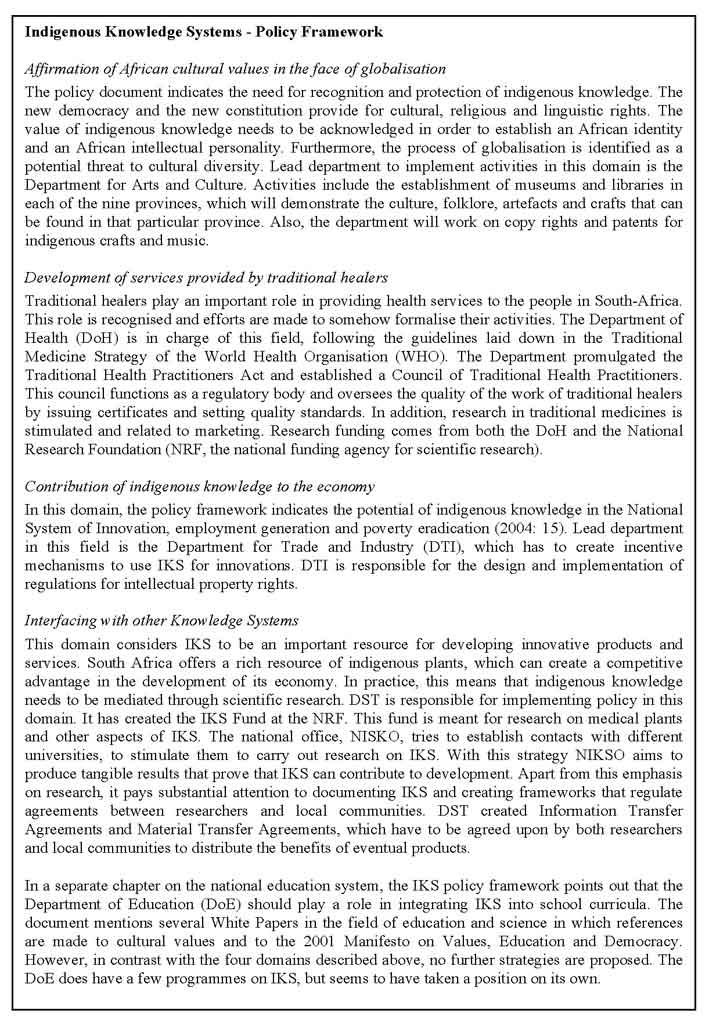
All in all the South African policy on indigenous knowledge systems is quite ambitious and covers a lot of ground. It relates to identity and cultural self-awareness as well as to innovation and marketing and it even seems to touch upon the interfacing of various knowledge systems. How does this work out in practice? How effective is this approach and can it really succeed in overcoming the legacy of the apartheid era? Of course we have to keep in mind that the policy framework is fairly new. It requires much coordination of activities that are carried out by several departments. Both these implementing departments and the coordinating office suffer from limited resources. But some observations can nevertheless be made.
Due to historical reasons South African discourse is highly politicised on anything ‘ethnic’ or ‘cultural’. All departments that have any dealings with the IKS policy framework acknowledge that indigenous knowledges are valuable to the country. Yet the concept represents a difficult and sensitive domain and this has effects on how the policy framework is perceived. For instance, different departments disagree on what to consider as indigenous knowledge and what not, or whom to include among the indigenous knowledge holders. Thus, while the political climate in general is in favour of stimulating diversity in culture and knowledge, one is very careful in what to stimulate and what not. This sensitivity probably explains the fact that the policy framework does not spell out a clear definition of indigenous knowledge systems. The resulting ambivalence allows for diverse interpretations of what is at stake and diverse strategies for avoiding sensitive political debates.
The education system: Struggling with diversity
When it comes to cultural diversity, the main players are the Department of Arts and Culture, stressing the importance of African values, and the Department of Education. During the apartheid regime, the education system and the school curricula were important instruments through which the government legitimised and enforced the supremacy of the white population. Logically, it was one of the first things to be radically changed after the fall of the regime in 1994. The school curriculum was turned upside down and history books were rewritten. In addition, as a guiding principle the Manifesto on Values, Education and Democracy came out in 2001. It was compiled by a special Working Group on Values in Education, which took the values that were laid down in the new Constitution (1996) as a point of departure. The Manifesto sets out six values that the education system should promote; equity, tolerance, multilingualism, openness, accountability and social honour.
Since 1994 the national school curriculum has been amended several times and reference is made to the value of indigenous knowledge systems. This means that there should actually be attention for it in schools. In practice, however, such attention is very limited. Hardly any teaching material has been developed and the issue is not part of the teacher training curriculum. Teachers feel ill-equipped to deal with cultural diversity and to discuss the comparative value of cultures. Content-wise, it is not at all clear how indigenous knowledge systems relate to the school curriculum. Such attention as is being given is limited to certain aspects of indigenous culture, mainly of an artistic or folkloristic nature. Despite the tremendous progress that has been made in restructuring and modernising the educational sector, integration of indigenous knowledge in school curricula seems to be avoided. Focusing on relatively harmless folklore seems to be an effective way of side-stepping dangerous political grounds.
Research activities: Politics in the laboratory
An equally effective strategy, used by both researchers and policy makers, is to adopt a technical focus on the content of IKS for economic purposes. This approach is followed by many of the natural sciences and research institutes; but also in policy circles one may find IKS approached as a resource. In the IKS policy framework we see this reflected in the attention for the contributions indigenous knowledge can make to the economy. Research into traditional medicines is predominantly directed at technical aspects, the identification of active elements that can be developed into regular medicines. This offers opportunities for the commercialisation of traditional medicines.
 Research is carried out on the use of indigenous plants as ingredients for medicine, food and cosmetics. For example, the CSIR in Pretoria examines indigenous plants that were identified by traditional healers for their medicinal use. The CSIR isolates the different compounds of the plant to examine which elements are active, which could be toxic and which could be used for the development of medicines in mainstream science. In this way, indigenous knowledge is validated by scientific methods. A next step is to commercialise the active compounds.
Research is carried out on the use of indigenous plants as ingredients for medicine, food and cosmetics. For example, the CSIR in Pretoria examines indigenous plants that were identified by traditional healers for their medicinal use. The CSIR isolates the different compounds of the plant to examine which elements are active, which could be toxic and which could be used for the development of medicines in mainstream science. In this way, indigenous knowledge is validated by scientific methods. A next step is to commercialise the active compounds.
But sensitive political dimensions are never far away. The question as to which plants are considered to be indigenous in the first place, carries a political load. At the University of KwaZulu-Natal (UKZN), indigenous plants are examined for their nutritious or toxic characteristics. One of the scientists prefers to look upon local flora in the sense of every plant that is presently growing in South Africa. But this is not a generally accepted point of view. One of the criteria used for considering a plant to be indigenous is that it should have its origins in South Africa. This means that some do not perceive the seeds and plants that came with the Indian immigrants starting from the late 19th century as indigenous. They refuse to examine such plants, even if they have clear nutritious value. The politics of history then dictate what is indigenous. ‘But’, as our scientist exclaimed, ‘history cannot feed our people!’.
Epistemological difficulties equally bedevil the implementation of the IKS policy. It is often felt that elements of indigenous knowledge should not be isolated, but must be seen as part of a culture or worldview that should not be broken down into composite components. In focusing on the active compounds of plants, the use of plants is subjected to a one-dimensional logic of cause and effect.This is not the way traditional healers experience their knowledge of herbal medicines. They have a much more holistic approach to diseases and the person who is ill. They do not see the disease as separated from the individual, his body, his soul, his history, or his family and ancestors. In this approach, and in direct contradiction to Boerhaave, persons who have the same disease may receive completely different treatment by the traditional healer. Implicitly, this echoes the 17th century Japanese criticism of western science.
Interfacing knowledges
As a respondent from the National Research Foundation indicated, validating the medicinal value of traditional plants in laboratories does not contribute to a further clarification of the concept of Indigenous Knowledge Systems. It does not contribute to a debate, nor does it present arguments to policy makers on the basis of which a comprehensive policy can be designed. The emphasis on extracting the useful, marketable components from indigenous plants avoids entering into the debate about cultural differences, diverging expressions of cultural identity, different epistemologies and inequality between cultural groups.
This brings us to the issue of interfacing different knowledge systems. One would expect an interface to reflect a situation in which different actors and their discourses meet and negotiate (Oosterom 2007). In the IKS policy framework, however, the emphasis is put on the opportunities offered by IKS to develop new products and services, in particular the development of new medicines. This implies that interfacing bears the meaning of extracting those aspects of IKS that can be used in other contexts. This does not seem to be essentially different from the way western science dissected and appropriated local knowledge for its own purposes. Is this not the man made monster with the poking eyes dissecting the body of knowledge bit by bit?
In this context it is worth reflecting upon the fact that the national coordinating office NIKSO was placed under DST. Until recently, activities on IKS were implemented by the culture division of the large Department of Arts, Science and Culture. This department was split up into two separate departments, the Department for Arts and Culture and the Department for Science and Technology. The IKS unit was shifted from culture to science.
As it was explained to the authors, this shift was meant to raise the status of indigenous knowledge and to facilitate the valorisation of indigenous knowledge for economic purposes. But it is intriguing to ponder the deeper significance of this. Does not this shift to the science department reflect an attempt to bestow some of the status of science (knowledge that is objectively verified and universally valid) on indigenous knowledge? And likewise, does not this shift away from the culture department reflect an attempt to free indigenous knowledge from the realm of cultural particularism? Moreover, is this not a political attempt to classify indigenous knowledge as ‘global’ rather than ‘local’, albeit without properly emancipating indigenous knowledge and clarifying its relation to other knowledges? And if so, does this not run counter to very ideal of valuing cultural diversity?
Drawing such conclusions too hastily would certainly be unwarranted. But such questions serve to draw the attention to both the political and epistemological intricacies of this policy. By and large it is difficult to avoid the impression that so far the South African policy on indigenous knowledge has failed to squarely address the question of articulating various knowledge systems. NIKSO hopes to quickly valorise indigenous knowledge from various sectors so as to prove the value of indigenous knowledge for development. But in doing so it may well unintentionally alienate such knowledge from its cultural context and unconsciously relegate this context as irrelevant.
Shying away from such questions, by either scientists or policy makers, is not the way forward. It is therefore very encouraging that we have also come across attempts where such intricacies are not side-stepped but addressed head-on. For example, the Durban School of Medicine has taken the initiative to create a space where research teams consisting of both medical doctors and traditional healers carry out research in traditional medicines. Traditional healers are given the opportunity to influence the research agenda. In case doctors and healers disagree, a solution is sought through dialogue. As one respondent put it: ‘None of us should think we always know best. That is our first principle’.
This form of collaboration creates a space where different epistemologies can meet and articulate. In addition, the Durban Department of Health organised a Memorandum of Understanding between clinics and traditional healers. This is based on the perception that people will visit both institutions for counselling and that this is embedded in social and cultural contexts. The memorandum foresees in procedures that facilitate the communication between the clinics and the healers. Durban is now referred to as the ‘Healing City’, with all the multi-layered connotations such a designation unavoidably has in the South African context.
Such developments are breathtaking and it is encouraging to see that South Africa has the courage to create room for initiatives of this kind. One hopes that many more such initiatives will take shape. And one equally hopes that such initiatives themselves will become the very object of reflection and research. There would seem to be a role for the National Research Foundation to play. But this example amply illustrates that is not merely a research matter. For various knowledge systems to articulate and communicate, one needs a truly transdisciplinary endeavour in which researchers, policy makers and practitioners join hands and in which knowledge bearers from various backgrounds meet.
Conclusions
Local knowledge turns out to be rather complex, both conceptually and as a policy device. We have seen a number of factors complicating the identification of local knowledge, its development and its owners. We have also seen that articulating local and scientific knowledge does not come about automatically and requires a negotiation space. Yet, despite these difficulties, there is no escaping the conclusion that different forms of knowledge do exist, that they are valid and valuable in their own contexts, and that they matter for development.
The globalisation of western culture with its claims to the universal validity of its values and knowledge, tends to obscure the existence of other values and knowledges. Without discarding the value of scientific knowledge and its many accomplishments, we now recognise that in the end scientific knowledge, like any other knowledge, is a social construct. The generation of such knowledge is embedded in a specific socio-cultural tradition, influencing both its content and its social significance. The scientific method historically developed in Western Europe under the particular circumstances of emerging and rapidly expanding capitalism. As we have indicated, the very claims to objectivity and universal validity of scientific knowledge reflect the same logic that underlies commercial thinking. Moreover, this hegemonic character of scientific knowledge reflects the aggressive and expansive character of capitalism itself. The acclaimed superiority of scientific knowledge echoes the idea of a single superior model for development.
In short, the objectivity of scientific knowledge stands unmasked and the delusion of its universality is challenged. Such awareness makes us realise that we should not discard prematurely bodies of knowledge other than modern science. This can help us avoid repeating the mistake of naively assuming that western development is the only type of development (Mehmet 1999). This again is a prerequisite for trying to unlock the potential of cultural diversity in the interest of charting alternative and varied development paths through mobilising and articulating multiple knowledges.
But we have seen that development discourse and practice are no exception to the rule of granting a dominant position to scientific knowledge. Policy makers and practitioners in development cooperation encounter different knowledges and perspectives on development. But they are not always able to acknowledge, let alone appreciate, alternative visions of reality. Chambers (1995) rightly asks the question ‘Whose reality counts?’ As Long (2001) explains, the recognition of different knowledges is complicated by social processes involving power and (mis)representation. Indeed, while terms like ‘participation’ and ‘ownership’ are celebrated by practitioners and policy-makers alike, one may question to what extent these ideals are truly employed in development practice.
Knowledge is not politically neutral, nor is its context. In the context of development various knowledges meet, but they do not meet on a level playing field. Differences of power and perception are such that dominant players may not even be aware that other knowledges exist. Moreover, groups and communities that have been marginalised in the process of global development, may have internalised dominant thinking up to the point where they are no longer even aware of being knowledge bearers in their own right. This poses a challenge to the design of adequate policy frameworks, aiming to incorporate various knowledges.
Issues for policy makers
The case of South Africa illustrates once more that the environment in which knowledge is developed, matters. The IKS strategy reveals two dimensions. First, the value of local or indigenous knowledge is emphasised for the sake of identity building in the post-apartheid era. However, as we have seen this remains a very sensitive issue and not all forms of local knowledge can easily be ‘stimulated’. Like knowledge itself, policies targeted at knowledge development and the use of knowledge are not politically neutral. Secondly, local knowledge is seen as an instrument for economic development. However, this view is limited to research focusing on the extraction of local knowledge and its potential for commercial use. In the South African case, knowledge is de-contextualised. It loses meaning and significance in the process and one may doubt whether the benefits of new products trickle down to the local level.
The government hardly contributes to a debate about how multiple knowledges negotiate or interact, or about the social dimension of such interaction. This is not surprising, as it would touch upon the status of different knowledge holders and upon relations of power and prestige. Nevertheless, the Department of Health seems to be active in searching for forms of integration of knowledges. It tries to find ways to formalise the work of traditional health practitioners, recognizing the importance of the position of traditional healers in society. All in all, this case demonstrates the complexity of the local knowledge issue with its many political, cultural, and economic aspects.
Creating a policy framework aimed at incorporating different knowledges on equal terms is not at all an easy thing to do. As we have stated, knowledge is dynamic and ever-changing. Different knowledges have always met and interacted. The question is how best to organise this, and on whose terms (and in whose terms) the potential of (indigenous) knowledge is to be unlocked? How to articulate various knowledges and how to avoid that in such a process indigenous knowledges are de-contextualised without being re-embedded in a new context where all stakeholders have a say? If not carefully dealt with, local knowledge loses value and significance.
Clearly, without proper preconditions different knowledges will not meet and communicate on equal terms. It is the role of policy makers to create such preconditions. It is the role of policy makers and development interventionists to create spaces for local voices to be heard and to be empowered to speak. Consequently, we call for the empowerment of the marginalised and for participatory approaches in the interest of mobilising local knowledge for development. As explained, this plea is not at all new within the discourse of development policy. But maybe our understanding of what is involved is somewhat less naïve. We realise that policy making on indigenous knowledge cannot avoid trespassing on the theory of knowledge. Certainly, more is at stake than a mere intervention methodology based on participatory planning and assessment.
As our analysis demonstrates, mobilising local knowledge for endogenous development is not to be confused with studying indigenous knowledge in terms of a scientific conceptual framework. Unlocking the potential of local knowledge for development calls for the articulation of multiple knowledges and not just the analysis of one knowledge in terms of the other. This implies embarking upon the twisting road of intercultural dialogue. Such an endeavour requires more than applying a participatory intervention methodology or even the methodical relativism of social anthropology. Temporarily suspending modernistic value systems and thought categories may help to better understand cultures in their own terms; it is not sufficient to enter into true dialogue.
Intercultural dialogue requires the articulation, indeed the negotiation, of different epistemologies and the meeting of alternative visions on development. It implies a conscious effort to relate one’s knowledge to different contexts and a willingness to experience that knowledge will change in the process. It requires a sensitivity to what knowledge may do when inserted in another context. In fact, it demands an attitude of respect for and active interest in other worldviews. As Nowotny et al. state:
There can no longer be universal objectivity – or only at a highly abstract, and practically meaningless, level. There can no longer be established canons of rules which must be followed in order to guarantee scientific reliability. Instead, scientific objectivity will have to be re-defined to become localized and contextualized; it will have to be shaped to anticipate the specific contexts where it will be challenged.
If this paper has made one thing clear, it is that articulating different knowledges is a thoroughly political endeavour. In mobilising local knowledge for development one enters the battlefield of the politics of knowledge. If we are really willing to stimulate negotiation between multiple knowledges, we need to recognise the notion of objectivity for what it is, a specific social and historical construct reflecting specific values and interests. We need to move beyond objectivity to negotiate knowledges for development.
References
Aglietta, M. and Orléan, A. (1982) La violence de la monnaie, Paris: Presses Universitaires de France.
Apffel-Marglin, F. (1996) Introduction: Rationality and the world, in: F. Apffel-Marglin and S.A. Marglin, Decolonizing knowledge. From development to dialogue, New York: Oxford University Press, pp. 1-40.
Apffel-Marglin, F. (1996) Rationality, the body, and the world: from production to regeneration, in: F. Apffel-Marglin and S.A. Marglin, Decolonizing knowledge. From development to dialogue, New York: Oxford University Press, pp. 142-81.
Armstrong, K. (2001) The battle for God, New York: Ballantine Books.
Bebbington, A. (1993) Modernization from below: An alternative indigenous development?, Economic Geography, 69(3): 274-92.
Briggs, J. (2005) The use of indigenous knowledge in development: problems and challenges, Progress in Development Studies, 5(2): 99-114.
Buchan, J. (1997) Frozen desire. The meaning of money, New York: Farrar Straus Giroux.
Buikema, R. (2004) De verbeeldingen van Saartjie Baartman. Van negentiende-eeuwse Europese freakshow tot eenentwintigste-eeuwse Zuid-Afrikaanse meidenrap, in: M. van Kempen and A. Zuiderweg (eds.) Wandelaar onder de palmen. Opstellen over koloniale en postkoloniale literatuur en cultuur, Leiden: KITLV, pp. 290-307.
Campbell, D. (1979) A tribal model of the social system vehicle carrying scientific knowledge, Knowledge, 1(2): 341-61.
Chambers, R. (1983) Rural development: Putting the last first. New York: Wiley.
Cook, H.J. (2007) Matters of exchange. Commerce, medicine, and science in the Dutch Golden Age, New Haven and London: Yale University Press.
Crew, E. and Harrison, E. (1998) Whose development? An ethnography of aid, London and New York: Zed Books.
Crush, J. (1995) Introduction. Imagining development, in J. Crush (ed.) Power of development, London and New York: Routledge, pp. 1-23.
Crush, J. (ed.) (1995) Power of development, London and New York: Routledge.
Daston, L. (1994) Baconian facts, academic civility, and the prehistory of objectivity, in: A. Megill (ed.), Rethinking objectivity, Durham, NC: Duke University Press, pp. 37-65.
Daston, L. and Galison, P. (1992) The image of objectivity, Representations, 40: 81-129.
Jansen, K. (2000) Grenzen aan participatie en lokale kennis: de ecologisering van pesticidengebruik als voorbeeld, Pedagogiek, 20(4).
Landes, D.S. (1998) Wealth and poverty of nations. Why some are so rich and some so poor, New York and London: Norton and Co,
Latour, B. (1987) Science in action. How to follow scientists and engineers through society, Cambridge-Massachusetts: Harvard University Press.
Latour, B. (1999) Pandora’s hope. Essays on the reality of science studies, Cambridge-Massachusetts and London: Harvard University Press.
Latour, B. and Woolgar, S. (1979) Laboratory life. The social construction of scientific facts, Beverly Hills, California and London: Sage Publications.
Long, N. (ed.) (2001) Encounters at the interface. A perspective on social discontinuities in rural development, Wageningen: Pudoc, Wageningen University.
Long, N. and Long, A. (eds.) Battlefields of knowledge. The interlocking of theory and practice in social research and development, London: Routledge Press.
Long, N. (2001) Development sociology. Actor perspectives, Abingdon, Oxon: Routledge Press.
Marglin, S.A. (1996) Farmers, seedsmen, and scientists: Systems of agriculture and systems of knowledge, in: F. Apffel-Marglin and S.A. Marglin (eds.) Decolonizing knowledge. From Development to Dialogue, New York: Oxford University Press, pp. 185-248.
Mehmet, O. (1999) Westernizing the third world. The eurocentricity of economic development theories, London: Routledge.
Molenaar, H.A. (2006) Communicating worldviews: Articulating global and local knowledge, in: B. Haverkort and C. Reijntjes (eds.), Moving worldviews. Reshaping sciences, policies and practices for endogenous sustainable development, Leusden: Compas, pp. 117-35.
Molenaar, H.A. (2007) Raising the veils of aid: Development and diversity, in: B. Haverkort and C. Reijntjes (eds.), Moving worldviews. Reshaping sciences, policies and practices for endogenous sustainable development, Leusden: Compas, pp. 389-99.
Nowotny, H., Scott, P. and Gibbons, M. (2001) Re-thinking science. Knowledge and the public in an age of uncertainty, Cambridge: Polity Press.
Ogilvie, B.W. (2006) The science of describing. Natural history in Renaissance Europe, Chicago and London: University of Chicago Press.
Oosterom, M.A. (year) Local knowledge in development. Issues for the DGIS Research and Communication Division. Research paper prepared for DCO/OC and the Centre for International Development Issues Nijmegen (CIDIN), The Hague: Ministry of Foreign Affairs, Research and Communication Division (DCO/OC).
Purcell, T.W. (1998) Indigenous knowledge and applied anthropology: Questions of definition and direction, Human Organization, 57(3): 258-72.
Purcell, T.W. and Onjoro, E. (2002) Indigenous knowledge, power and parity: Models of knowledge integration, in: P. Sillitoe, B. Bicker and J. Pottier (eds.), Participating in development. Approaches to indigenous knowledge, London and New York: Routledge Press.
Rip, A. (2002) Science for the 21st century, in: P. Tindemans, A. Verrijn-Stuart and R. Visser (eds.), The future of the sciences and humanities. Four analytical essays and a critical debate on the future of scholastic endeavour, Amsterdam: Amsterdam University Press, pp. 99-147.
Shapin, S. and Schaffer, S. (1989) Leviathan and the air-pump. Hobbes, Boyle, and the experimental life, Princeton: Princeton University Press.
Sillitoe, P., Bicker, B. and Pottier, J. (eds.) Participating in development. Approaches to indigenous knowledge, London and New York: Routledge Press.
Smart, B. (2002) Michel Foucault. Revised edition, London and New York: Routledge.
Utting, P. (ed.) (2006) Reclaiming development agendas. Knowledge, power and international policy making, UNRISD.
Vandemoortele, J. (2004) Are the Millennium Development Goals feasible, in: R. Black and H. White (eds.), Targeting Development, London: Routledge.
Warren, D.M, Slikkerveer, L.J., Brokensha, D. (ed.) The cultural dimension of development: Indigenous knowledge systems, London: Intermediate Technology Publications.
About the Authors
Henk Molenaar is the executive director of WOTRO Science for Global Development. Molenaar (1952) graduated in cultural anthropology from Leiden University, the Netherlands, where he also completed his doctoral research. He then went on to work in various functions and countries for DGIS (the Netherlands Directorate General for International Cooperation) and the Dutch development organisation SNV, including as director of the SNV country programme in Kenya. In 1998 Molenaar was appointed Head of the Human Resource Development division at SNV. Molenaar left SNV in 2003 and moved to DGIS where he worked as a policy advisor in the research and communication division. Here he played an important role in the formulation of a new DGIS knowledge and research policy. In 2006 he became acting head of this DGIS division (DCO/OC), where his work included the strengthening of relationships between policy and science.
Marjoke Oosterom worked for the Ministry of Foreign Affairs and Hivos. She is currently pursuing a PhD at the Institute of Development Studies at the University of Sussex, (Brighton, UK) and is a research associate at Refugee Law Project, Makerere University (Kampala, Uganda). Her research is entitled ‘Relations between citizens and local governments in Northern Uganda. Enhancing civic engagement after violent conflict’. This research project is carried out in collaboration with Hivos and ICCO. Interested in how citizens can organise and raise a voice in the difficult circumstance of a (post)conflict setting, she developed expertise in the fields of conflict and development; post-conflict recovery; participatory governance and inclusive citizenship.


